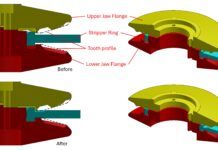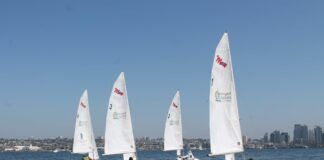Long Island Sound, the belt of water stretching 110 miles from Hell Gate in New York City to the Race at the Sounds eastern end, is a fitting emblem of the water-quality woes future generations will face. Today, as Tom Andersen, author of This Fine Piece of Water: An Environmental History of Long Island Sound, describes, the Sound is at the brink of an ecological crisis, a term so frequently applied today that weve become numb to it.
Beginning with the first European explorers and ending with heated not-in-my-backyard debates over sewage treatment plants in the late 1990s, Andersen chronicles the Sounds demise, as well as its still uncertain resuscitation. Tanneries, brass factories, textile mills, munitions plants-virtually every industry that shaped the modern era has used the Sounds watershed as a dumping ground. Today, as it was in the time Andersen wrote the book in 2002, 1 billion gallons of sewage-6 million gallons of it untreated-flow into the Sound each day.
The stakes are huge. Water pollution costs businesses $6 billion in water-related business each year, including fishing, tourism, and boating. On fair-weather Sundays in the summer, some 90,000 boats are on the water and 6 million people crowd local beaches.
Nowhere in his book does Andersen cite boaters who invested in expensive onboard treatment systems as a source of pollution. In fact, these systems are not a problem, but with millions of dollars of state and federal Clean Vessel Act dollars on tap, theyve become a threat worthy of a nice, fat grant.
In September, the State of New York officially designated its portion of the Sound a No Discharge Zone, just as Connecticut did in 2007. Nearby Rhode Island declared all of its waters a No Discharge Zone in 1998. A cruising sailor visiting these areas must now keep all of his waste onboard until reaching one of the regions pumpout stations or pumpout vessels. New York has 58 such stations to serve 1,300 square miles of Long Island Sound. Connecticut, by comparison, has 95. By law, a No Discharge Zone must be adequately served by pumpout facilities. Adequate, it seems, is in the eye of the land-bound beholder.
Despite the powerful rhetoric claiming that New Yorks new law will finally penalize those boaters who dump raw sewage into the water, this action doesn’t require a No Discharge Zone. Federal law has prevented the dumping of untreated waste in coastal areas for nearly four decades. Instead, the new law penalizes boaters with systems such as the Raritan LectraSan, one of the few options available to sailors who want to treat their waste onboard.
The misleading arguments offered by politicians, eco-groups, and marine businesses in support of No Discharge Zones are at the very least ingenuous-and at the worst, pure myth. True, for a boat that stays in a marina, pumpout stations are a viable option. But to stymie the development of effective onboard treatment systems with an unnecessary, sweeping ban is a step backward-not to mention a waste of taxpayer dollars.
Now, with this environmental win behind them, the politicians can move ahead with the real work required: investing in new research, technology, and infrastructure, including more sophisticated water treatment plants. Of course, that will mean finding funding and infuriating the well-heeled communities that object to the smell of sewage. Good luck with that.
Sadly, in a world where-as Aldo Leopold remarked back in 1938-we can’t seem to live on the land without ruining it, the voices of self-sufficient cruising sailors hold very little sway.





































